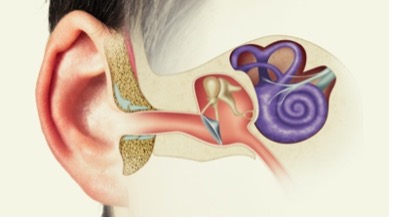Thin Film Cochlear Electrode Array
TECHNOLOGY NUMBER: 4536

OVERVIEW
Advanced thin-film cochlear electrode array for improved pitch perception
- Increases electrode sites, deeper insertion, reduced cost, integrated placement
- Cochlear implants, hearing restoration, neural prosthetics
BACKGROUND
Cochlear implants are the most successful neural prostheses for the deaf, yet they suffer from poor pitch perception. Traditional designs use wire arrays inserted into the scala tympani, limited to about twenty stimulating electrodes due to size constraints and manufacturing costs. Thin-film arrays offer potential advantages by increasing electrode site count (enhancing pitch specificity), enabling deeper insertion (wider pitch range), and reducing costs. However, to replace wire-bundle technology, thin-film arrays must achieve the same reliability, robustness for safe insertion, integrated positioning, and stiffness for deep insertion. Existing thin-film arrays require molded carriers that complicate manufacturing and may occlude electrode sites or cause damage during assembly. This creates a need for a thin-film array that incorporates these attributes directly into its design.
INNOVATION
University of Michigan researchers have developed a sophisticated thin-film cochlear electrode array with enhanced site density, built-in curl, integrated positioner, and tailored stiffness. Unlike conventional wire arrays, this design features a robust, flexible substrate capable of withstanding the cochlea's tight helical structure. The substrate is embedded with curl-producing layers such as residual stressed metal strips or conductive polymers, ensuring it can hug the modiolus for close contact with neural receptors. Additionally, the array includes adjustable rings that provide the necessary stiffness for insertion while maintaining pliability to curl once inside the cochlea. A lumen within the rings allows a stylet wire to straighten the array for insertion and then be retracted, enabling the array to curl into place. Applications include advanced cochlear implants for hearing restoration and neural prosthetics, offering enhanced pitch perception and greater effectiveness in restoring hearing.